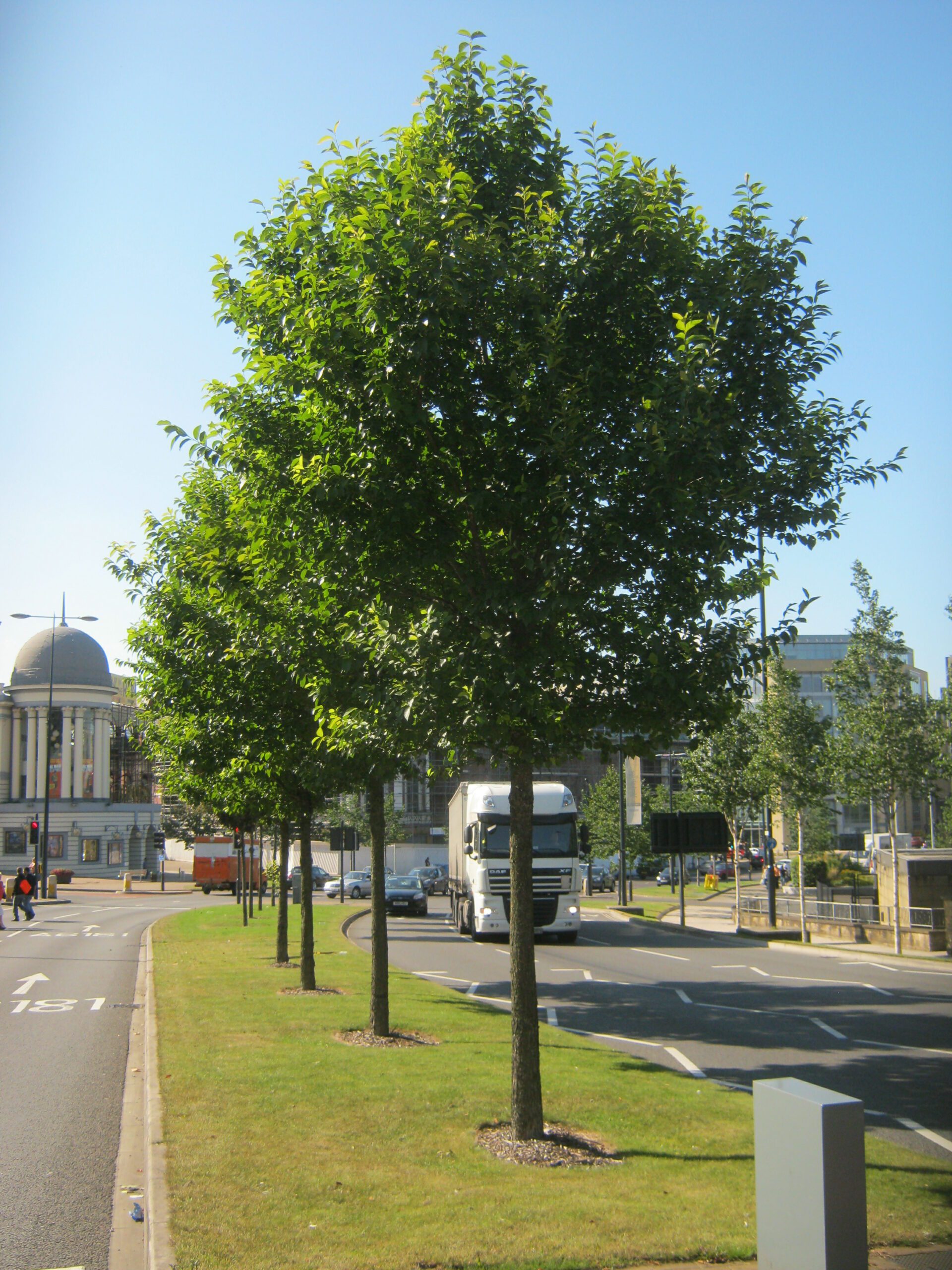Hillier Nurseries are proud to be the sole UK grower and supplier of the Resista® Elms. These have been bred to be 100% resistant to Dutch Elm Disease and consist of Ulmus ‘New Horizon’, Ulmus Fiorente and Ulmus ‘Rebona’.
Long-term Success for Elms
Ulmus ‘New Horizon’ was formally launched by Hillier back in 2005 at RHS Chelsea Flower Show. This was the same year that the Elm was awarded Best New Plant at the Grower of the Year Awards. Tens of thousands of these new resistant Elms have now been planted the length and breadth of the British Isles and in Europe — from Madrid to the Steppes of Russia – with no incident of any succumbing to Dutch Elm Disease.
A further positive outcome has been the ability of the elms to become a habitat for the endangered White-letter Hairstreak butterfly that relies on the Elm trees to breed. This once common butterfly experienced a catastrophic decline in population in line with the demise of the native Elm.
Request A Quote
Characteristics
Both Ulmus ‘New Horizon’ and Ulmus ‘Rebona’ share the following characteristics:
• 100% Resistant to Dutch Elm Disease
• Tolerant of pollution
• Tolerant of salt (making them first class coastal trees)
• Tolerant of drought
• Tolerant of short-term waterlogging
• Very quick establishment
• Fast growing
• Tolerant of weather extremes – hot and cold temperatures
• Great for insects, in particular the endangered Whiteletter Hairstreak butterfly
The two hybrids differ in their form. Ulmus ‘New Horizon’ broadens to become a large tree with a rounded canopy. Ulmus ‘Rebona’ also becomes a large tree, but with a broadly columnar habit. Rigorous trials are currently underway for further disease resistant Elm varieties.
Contact Us








